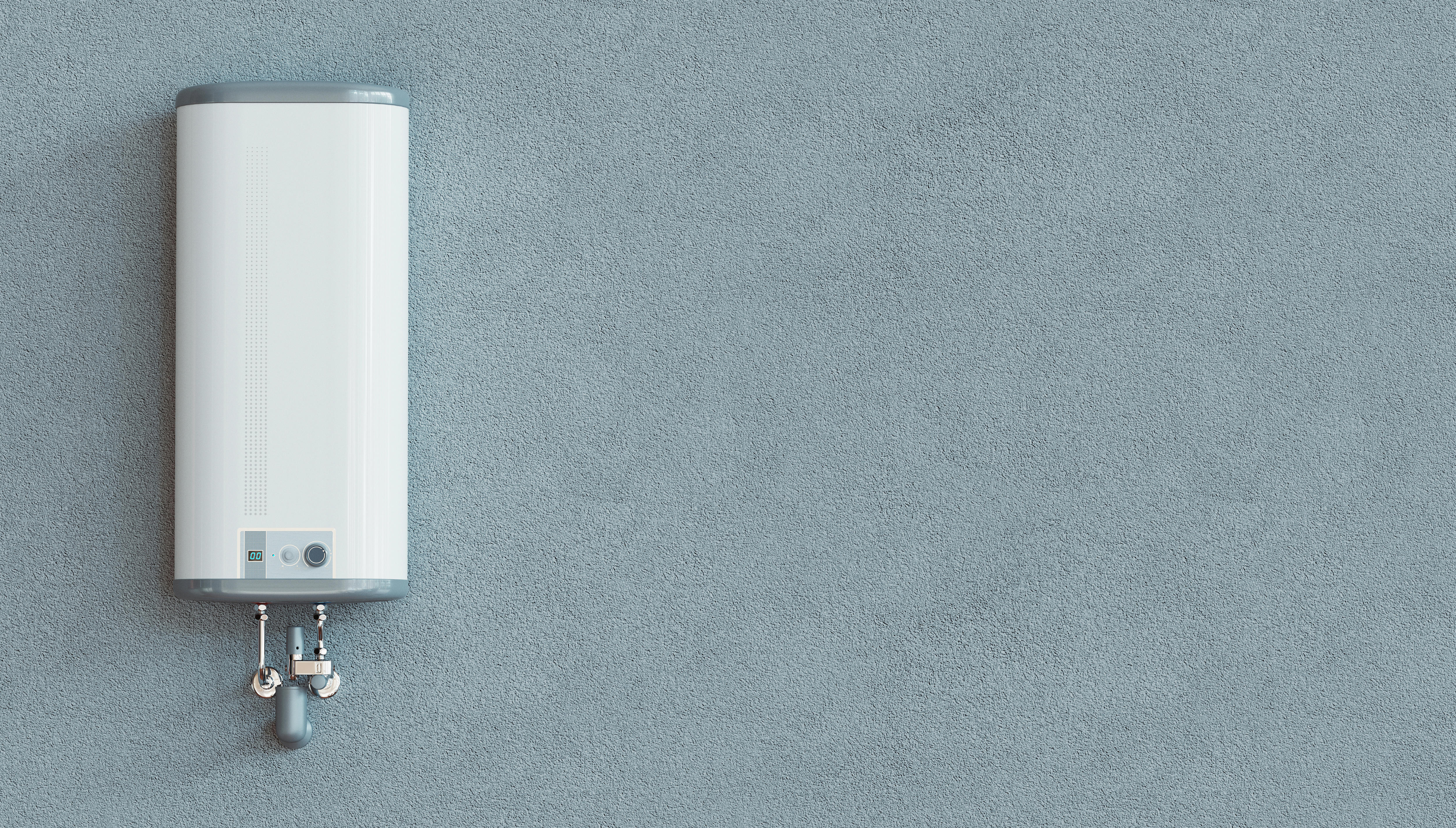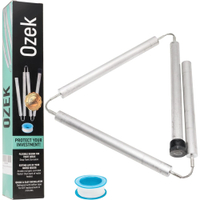Essential water heater maintenance – 5 tasks to prevent issues developing
These DIY water heater maintenance tasks are essential for an efficient, safe, and long-lasting appliance


Water heaters are an essential component of any household, providing a continuous supply of hot water for the whole house. However, without some preventative maintenance, severe issues are likely to arise, causing your unit to break down. At this late stage, fixing the appliance can significantly eat into your savings.
Several factors, such as defective internal parts, debris accumulation, and misuse, can put the unit under excessive stress, which may explain why your heating is so expensive. So, rather than ignoring your water heater until malfunctions or damage causes it to break, addressing problems when they arise can help you steer clear of costly repairs or replacements and cut energy bills.
These 5 simple appliance maintenance tasks, recommended by experts, are crucial for ensuring your water heaters' longevity and efficiency.
Essential water heater maintenance
All these checks and maintenance tasks can be done quickly and easily at home, meaning preventing issues couldn't be simpler. However, we recommend having a professional deal with any serving issues to keep your unit running efficiently and prevent future issues.
1. Flush the tank

Over time, minerals and debris from your water supply can settle at the bottom of your tank, creating a layer of sediment.
'This affects the water heater’s efficiency,' explains Kelly Russum, owner of KC's Plumbing & Air Conditioner. 'Sediment acts as an insulator between the water and the heat source in a tank, causing the unit to work harder to heat the water. In tankless water heaters, sediment can clog and reduce the efficiency of the heat exchanger.
'Debris can also reduce the amount of hot water available for use and reduce a unit's lifespan. Sediment buildups that are not addressed promptly can accelerate corrosion and damage vital components of a tankless water heater, such as the heat exchanger.'
As a result, it is essential to periodically flush the sediment out of the tank to remove this buildup and keep your hot water heater running smoothly.
How often to flush the tank
You may be wondering how often you should drain your water heater? Well, in areas with soft water or tanks with a water softener, it should be flushed every six months, and for areas with hard water, every twelve months should do the trick.
How to flush the tank
'In traditional tank water heaters, sediment builds up at the bottom of the tank. In tankless heaters, sediment primarily affects internal components like the heat exchanger. Due to the distinct designs of both water heater types, removing a sediment buildup differs,' explains Kelly Russum.
'If you need to flush a tank water heater, drain the tank completely and let the water and sediment flow out.
'To remove sediment buildup in a tankless water heater, use a descaling solution such as vinegar or an off-the-shelf descaling agent. This process generally requires shutting off the power and water supply to the unit, connecting a pump to the service valves, and circulating the solution through the system for a period of time, often about 45 minutes to an hour.'
You can find this tankless water heater flush descaling solution at Amazon, as well as this tankless water cleaning kit

Kelly Russum founded KC’s 23 ½ Hour Plumbing in 1978. Today, Kelly and his team continue to provide expert plumbing solutions and air conditioning and heating repairs, installations, and maintenance. He is as dedicated as ever to making a difference in the way his customers experience home services.
2. Replace the anode rod
The anode rod is a sacrificial metal component inside your water heater designed to attract minerals and other destructive elements in the tank to help prevent corrosion.
However, over time, the anode rod becomes depleted, and once it reaches its end of life, the minerals return to degrading the lining of your hot water tank.
So, to extend the life of your water heater, the rod needs to be replaced.
How often to replace the anode rod
How often to replace the anode rod in a water heater will depend on a few factors, including the type of water in your area and the quality of the heater itself, so it's recommended to check the condition of the anode annually to assess its condition and determine if it needs to be replaced.
Generally, the anode rod should be replaced every 3-5 years.
How to replace an anode rod
'To replace the anode rod, first turn off the electrical breaker if electric or the gas if gas powered,' advises Robert Taylor, owner of The Real Estate Solutions Guy:
- To prevent accidental burns from the hot water, you can run 5-10 gallons of hot water in the house or until the hot water cools.
- Next, turn off the cold water valve that supplies your water heater. When the water and power are off, look for a round plastic cap about 1 ¼ inch on the top of the water heater. Your anode rod will be under the cap, and probably protected by about an inch of foam insulation. You can dig out the insulation with a screwdriver until you find a large-looking metal nut.
- Then, using a 1 1/16 inch deep socket and wrench, unscrew the nut and lift out the old anode rod. You might want to wear thick gloves as the anode rod will be hot as well.
- Replace with your new anode rod, making sure it is properly tightened to prevent leaks. A new anode rod can be purchased at many hardware and plumbing supplies stores, or online for around $20-$30.
- Turn your water and electricity or gas back on, and your tank should refill and last another five years.
Ozek Water Heater Anode Rod | $27.45 from Amazon
This anode rod is compatible with most heaters. It is easy to install due to its flexible design and includes a roll of pipe sealing tape.
3. Regularly check the pressure relief valve

'The pressure relief valve is a safety feature that prevents excessive pressure from building up in the tank,' explains Josh Mitchell, plumbing technician and the owner of Plumbing Lab. 'However, if this valve is not functioning properly, it can lead to issues such as leaks or even tank explosions.'
Regularly checking your water heater's relief valve is a simple step that can significantly extend the water heater's life by mitigating pressure build-up and preventing potential leaks.
How often to check the pressure relief valve
It's recommended to test this valve once a year to ensure it is working properly and not stuck closed.
How to check the pressure relief valve
'Give it a quick test by lifting the valve a few seconds to let out a bit of water into the overflow drain,' says Josh Mitchell. 'You should hear a rush of air or see some water come out. If water doesn't come out, or if it keeps dripping after you've closed it, it's time for a replacement.'

Josh Mitchell is, a plumbing expert and HVAC technician and the owner of Air Conditioner Lab and Plumbing Lab.
4. Adjust the temperature setting
The temperature and pressure settings of your water heater can also play a role in preventing issues. If these settings are too high, it not only wastes energy but can also put unnecessary strain on your heater and increase the likelihood of problems such as leaks or tank failure.
It's important to regularly check and adjust these settings according to the manufacturer's recommendations to ensure optimal performance and prevent any potential issues.
How to adjust the temperature settings
'Leaks and bursts occur when the tank's pressure rises due to high temperatures (140 to 145 degrees Fahrenheit),' explains Josh Mitchell. 'Reduce this pressure by setting the thermostat to around 120°F (49°C) to balance efficiency and comfort.
Reducing the temperature of your water heater can also help you save a little money each month on your energy costs.
5. Monitor for leaks and corrosion
Catching and addressing issues such as leaks and corrosion early can prevent costly water damage and the need for premature replacement. Even small drips or puddles can indicate a larger problem that needs to be addressed.
'Regularly check your water heater for signs of leaks or corrosion on the tank and its connections Inspect all visible pipes and connections, as well as the tank itself, for any signs of leakage,' advises Josh Mitchell.
In addition to regular maintenance tasks, it's important to schedule annual maintenance with a professional. They can thoroughly inspect your water heater and make necessary repairs or adjustments to extend your water heater's lifespan. Also, an annual tune-up can help extend the lifespan of your heater and save you money in the long run.
Sign up to the Homes & Gardens newsletter
Design expertise in your inbox – from inspiring decorating ideas and beautiful celebrity homes to practical gardening advice and shopping round-ups.

Lola Houlton is a news writer for Homes & Gardens. She has been writing content for Future PLC for the past six years, in particular Homes & Gardens, Real Homes and GardeningEtc. She writes on a broad range of subjects, including practical household advice, recipe articles, and product reviews, working closely with experts in their fields to cover everything from heating to home organization through to house plants. Lola is a graduate, who completed her degree in Psychology at the University of Sussex. She has also spent some time working at the BBC.
-
 5 fast-growing tiny flowers – expert recommendations to fill your pots and borders with color in record time
5 fast-growing tiny flowers – expert recommendations to fill your pots and borders with color in record timeThese fast-growing tiny flowers prove that miniature can also be marvelous
By Thomas Rutter
-
 Midimalist kitchens are the trending way to create a characterful yet clutter-free space – and these 8 spaces prove how chic this best of both worlds style can be
Midimalist kitchens are the trending way to create a characterful yet clutter-free space – and these 8 spaces prove how chic this best of both worlds style can beIt's the go-to kitchen style for a balance of busy and simplistic design
By Molly Malsom
